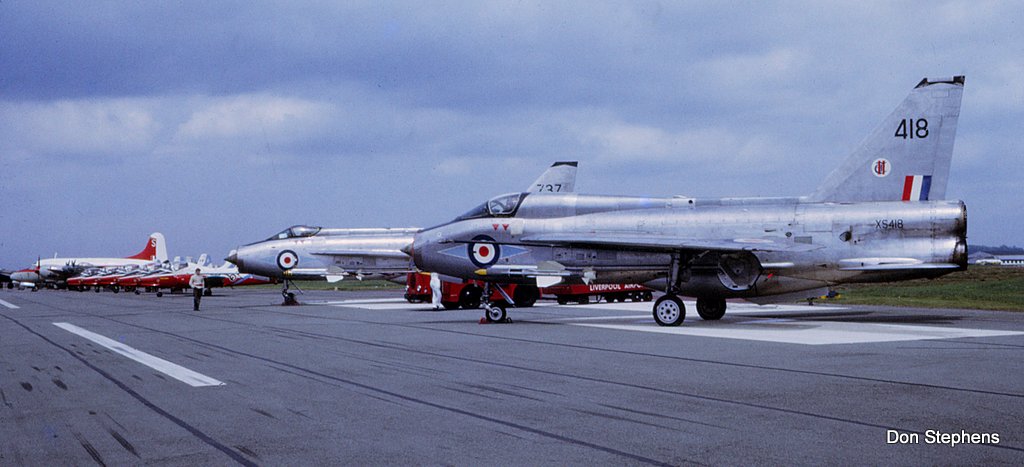MERSEYSIDE AVIATION DISPLAY
TO MARK THE OPENING OF THE NEW LIVERPOOL AIRPORT at SPEKE
SATURDAY, 1st JULY, 1933.
2018 INTRODUCTIONThree events have come together in recent months that provide both the opportunity and the detail of the Grand Opening Air Display at Liverpool Aerodrome, Speke on 1st July 1933. An event hailed at the time as being the biggest ever British Air Display outside of RAF Hendon’s annual event.
I have recently found that the coverage in ‘Flight’ magazine (available on the Internet as archive material, issue 6/7/33 p.674-677) was a 3+ pages long description of the event and that ‘The Aeroplane’ covered the event too. During Spring ‘18, David Smith was delighted to find and purchase a copy of the programme for the event and has been only too pleased to generously share the contents with researchers. A very big ‘thank you’ to Dave. While finally 1st July 2018 marked the 85th Anniversary of the event – even though I am a little late by the time I’m ready to post.
The Flight and Aeroplane coverage along with the Air Display programme are somewhat verbose with much flowery detail in the text. My initial plan was to transcribe all in full, but, while giving a great flavour of the period, the whole article would be simply too long and repetitive for all but the most dedicated of readers. So what I have done is combine the civil and military sections, morning, afternoon and evening programmes into one simple list – much as they would appear across the central pages of a modern-day programme; then provide more detail for many of the displays and competitions using both the original programme and comments in the Flight and Aeroplane coverage. There might be more in the Liverpool Record Library in the Liverpool Daily Post and Mercury newspaper archives, but I am a little remote from that source at present. What I am missing is an aviation enthusiast’s log of the event – if only! Some registrations are provided in the programme and types participating by Flight magazine, but a far from complete record and of course some of those provided in the programme could have changed on the day, or be ‘no shows’.
On a personal note, my father and his elder brother were both at the event. My father would have been 14 at the time and the family lived near Penny Lane. His elder brother took a home movie of the aircraft from the crowd. When I became interested in Liverpool Airport’s history, a big search by elder brother Eddie in the 1970s did not uncover the reel of film, nor did it emerge on house clearance after his death in the 1990s either, so clearly had not survived several earlier house moves. One further anecdote, Eddie though did manage to ‘blag’ a flight in an aeroplane that day – something their mother was extremely cross about and my dad quite annoyed, as he was the one really interested in going flying – and indeed went on to fly with the Royal Air Force 1941-1947, but that is another (quite interesting) story entirely.
The 1933 Air Display Programme Cover[/div]
Map from page 41 of the Merseyside Aviation Display Programme. Although the print detail is rather small, the air display programme airfield plan is provided in some detail. The initial aerodrome was smaller than the eventual ‘north airfield’ site – and the hard runways were 9 years in the future. The splitting of the aerodrome into two flying fields is a little confusing to modern thinking.
THE GRAND OPENING AIR DISPLAY - PROGRAMME OF EVENTS
SPEKE, 1st JULY 1933
MORNING ACTIVITY
10.00 Gates open
10.30 RAF aircraft arrive en masse from RAF Sealand
11.00 Pleasure flights commence
11.30-12.30 Arrival competition for civil pilots
11.00-12.45 Landing competition for civil pilots
13.00-14.00 Luncheon interval
AFTERNOON DISPLAY
14.00 All the RAF aircraft taxi from the display park to line up for inspection with their Officers.
14.10 Civil aircraft taking part in the Salute d’Air taxi into position
Arrival of the Air Ambulance of the British Red Cross Society, Desoutter Cabin Monoplane G-ABRN
14.23 Arrival of the Airport Committee of Manchester Corporation on Fox Moths G-ACFC and G-ABWF
14.40 Arrival of the Right Hon The Marquess of Londonderry, KG, Secretary of State for Air in a Hawker Hart,
escorted by 9 x Bristol Bulldogs of 29(F) Sqdn.
14.45 Lord Londonderry will inspect the RAF machines
15.00 The Air Minister from a platform will declare the Airport open
15.05 The Air Minister will return to the Air Minister’s Pavilion.
15.07 Clearing Customs. A demonstration of how an airliner is prepared for flight and clears Customs.
15.10 Salute d’Air. A parade of the many types of civil aviation types
15.25 Autogirations. The Cievra Autogiro (period spelling) demonstrated by the Company’s Chief Pilot and Flying Sales Manager Mr R.A.C.Brie
15.23 Ace and Cadet. Flt.Lt. C.H.Stainforth, AFC (a distinguished pilot and winner for Britain of the World Speed record of 407 mph at
at Calshot September 1931) will demonstrate the Avro Cadet (likely G-ABWJ)
15.40 Happy Landings. The six best pilots from the morning heats will compete for the trophy
15.53 How High? One of Sir Alan Cobham’s aircraft will arrive from Dublin, releasing white smoke at an altitude known only to the pilot.
The public have to guess the height. The best 10 will be given a flight when the National Aviation Day Squadron visits Liverpool
Airport in September.
15.55 Timed departure of the Liverpool-Blackpool-Liverpool Air Race competitors.
16.05 Parachute drop. Five parachutists will drop using 3 different designs of canopy and compete to land closest to the aerodrome circle.
16.20 When Pigs Fly. Stunt flying and balloon bursting with a lance, along with a crazy commentary
16.30 Squadron Air Drill 23(F) Sqdn with 9 x Hawker Demon
16.45 Flight Aerobatics 1(F) Sqdn with 3 x Hawker Fury
16.55 Inverted Flying CFS with 5 x Avro Tutor
17.05 Air Combat 4(AC) Sqdn with a single Hawker Audax reconnaissance aircraft, plus 43(F) Sqdn with 3 x Hawker Fury
17.10 tied together drill 25(F) Sqdn with 9 x Hawker Fury
17.20 Return of the Liverpool to Blackpool Air Race I fancy on the day, the Air Race returned after the end of all the military flying
17.35 Long-range monoplane. The March 1933 record breaking Fairy Monoplane UK-South Africa. This aircraft, K1991 departed to Farnborough
after the display routine.
17.45 Delayed Parachute Drop. Celebrated parachutist, Capt C.B.Wilson will jump from a Bristol Fighter at 5,000ft but not pull the
rip-cord until 3,000ft having reached 144 mph.
17.50 Civil Aviation 1933. A demonstration of some of the very latest types of civil aircraft:
18.10 Comperantics. Synchronised aerobatics at speeds of 130 to 150 mph demonstrating the ‘baby’ Comper Swift single-seat monoplane
built at Hooton, Cheshire. G-ABVU F.R.Walker and G-ABTR Nigel Tangye.
18.20 Concours d’Elegance.
18.25 Farewell to the Royal Air Force. The RAF aircraft will depart by Squadrons to RAF Sealand and dispersal to their various stations.
18.30 Prize Distribution. Trophies, Mementoes, cheques etc will be presented by the Lord Mayor accompanied by the Lady Mayoress and by
Lord Londonderry.
EVENING DISPLAY
19.00 Autogiro Demonstration. Mr R.A.C.Brie
19.20 The B.A.C. Drone. Capt Don Ayre will demonstrate this glider fitted with a small motor-cycle engine.
19.40 Crazy Flying. Demonstration of low flying by Flt.Lt. Geoffrey Clapham of the Liverpool and District Aero Club flying Gipsy Moth
G-EBMO (Regn incorrect as this a/c sold in India 1927, G-EBMQ a strong candidate though, oddly on a an aerial photo the top
wing regn G-ABMO is fairly clear – but is an Avro Avian!).
20.00 How High? Another chance for 10 members of the public to win a flight on one of Sir Alan Cobham’s airliners, by guessing the
height of an aircraft flying overhead releasing smoke.
20.20 Parachute descent by two parachutists – those placed second and third in the earlier parachute competition.
Aircraft type that they are jumping from will be announced on the microphone.
20.30 Evening programme ends and passenger flights will continue until dusk.
22.00 Gates close.
NIGHTTIME CELEBRATIONS The Air Display was not the end of the day’s events for invited guests and visiting pilots.
20.30 Banquet at the Town Hall given in honour of the Secretary of State for Air,
followed by an Aviation Dance at the Adelphi Hotel.
MORE DETAIL ON SOME SECTIONS OF THE FLYING DISPLAY PROGRAMME
GENERAL DETAILThe weather on the day is stated to have started with low cloud and drizzle, however this cleared to become a pleasantly fine, indeed a hot day with air conditions described as ‘bumpy’. There was an estimate of 50,000 spectators, and 246 aircraft present. Those two statistics being quite amazing, and show the size of the event and just how enthusiastic about aviation the general public of Liverpool were in 1933.
THE OFFICIAL OPENING CEREMONYLord Londonderry, Secretary of State for Air opened the Aerodrome. He arrived in a Hawker Hart K2456 of 24 Sqdn, escorted by 9 x Bristol Bulldogs of 29(F) Sqdn RAF. Earlier in the day he had flown up from RAF Hendon for luncheon at RAF Sealand. On arrival at Speke he was welcomed by the Lord Mayor (Councillor A. Gates), Group Capt H.J.Hunter (Officer Commanding the R.A.F. display) and Mr.F.G.Bertram (Deputy Director of Civil Aviation, representing the Director, Col. F.C.Shelmerdine). After a farewell dipping pass in salute, the Bulldogs returned directly to their base at RAF North Weald. An inspection of the large number of R.A.F. aircraft and RAF personnel followed before Lord Londonderry was driven across to a raised platform to make a short speech declaring the airport open. Following this he was driven to the Air Minister’s Pavilion (In today’s English, the VIP enclosure). One missing person in all this ‘Flight’ name-dropping is that of Sqdn Ldr H.J.Andrews, the Commandant of Speke Airport and very active in getting both Aerodrome ready and Air Display organised. He does however get a full and honourable mention in ‘The Aeroplane’ coverage.

Lord Londonderry arriving as passenger in a 24 Sqdn Hawker Fury K2456
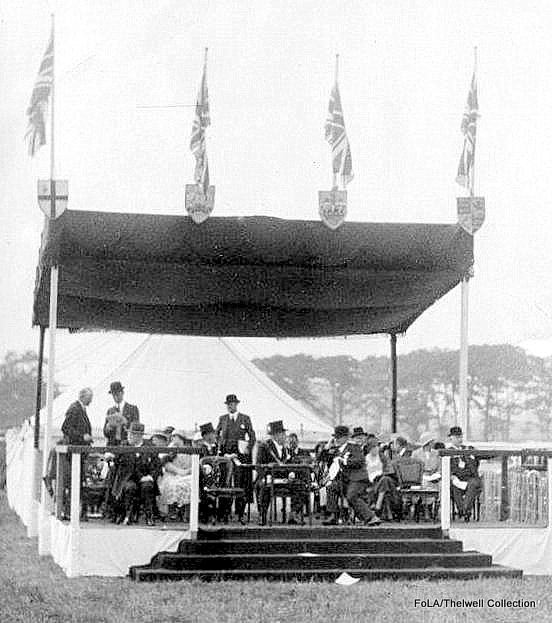
The V.I.P. ‘Pavillion’
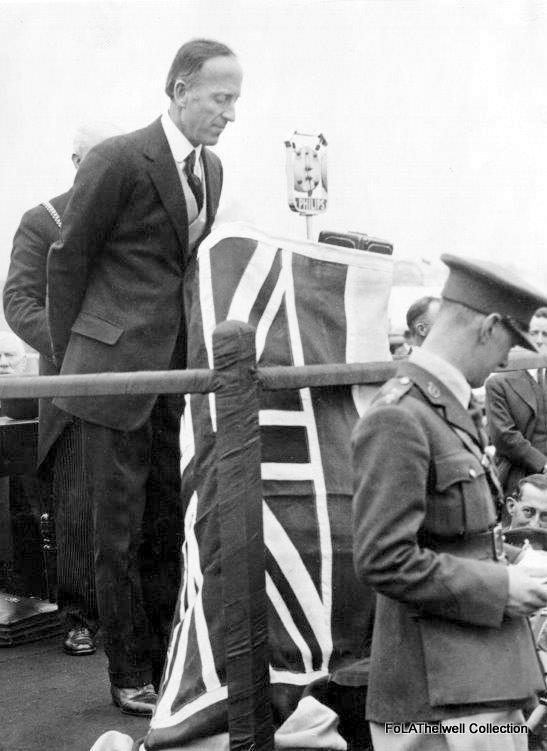
Lord Londonderry addressing the crowd and declaring the opening of Liverpool Airport.
CIVILIAN PARTICIPATION, COMPETITIONS
There were several competitions for civilian pilots, an Arrival Competition, a Landing competition, along with a Concours d’Elegance. There was also the Air Race to Blackpool and back. For the public there was a guess the height competition.
- ARRIVAL COMPETITIONThis competition was based on the difference between the pilot’s estimated time of arrival (as advised by telegram before departure), and the arrival time across a line on the airfield. A formula whereby the number of seconds early or late was divided by the number of air miles flown decided the competition winners. Prize money for 1st £20 and a Silver Cup, 2nd £15 and 3rd £10. The prize winners were:
| Position | Type | Pilot | additional comments |
| 1st | GAL Monospar | Mr M. Jackaman | with passenger Mrs Shelmerdine |
| 2nd | Avro Cadet | Flt.Lt. J.B.Veal | Air Service Training, Hamble |
| 3rd | DH Puss Moth | Flt. Lt. J.B.Allen | Duchess of Bedford |
Mrs Shelmerdine was the wife of the Director of Civil Aviation, who should have been at the Air Display, but had been called away on urgent business overseas.
- LANDING COMPETITIONThe landing competition which would be entered having completed the arrival competition, was to land up-wind into a flagged 80 yards long x 70 feet landing area with propeller stopped. The distance from a datum line drawn across the lane to the tail skid/wheel was then measured. The top 6 pilots later competing in a fly-off to establish the winners. Prizes: 1st £20 and a Trophy, 2nd £15 and 3rd £10.
| Position | Aircraft type | Pilot |
| 1st | Avro Cadet | Flt.Lt. J.B.Veal |
| 2nd | Autogyro | Mr. R.A.C.Brie |
| 3rd | Puss Moth | Mr. O.F.Scott |

A casualty of the initial ‘Arrival Competition’, Gipsy Moth G-AAHP/13 suffered a minor undercarriage mishap. Well that is what the caption on the back states, another interpretation is that the photo is of the Air Race Moth '13' undercarriage collapse mishap at Blackpool/Hesketh Park - or perhaps Moth G-AAHP/13 suffered an undercarriage collapse twice in the day! There is a second photo of this aircraft on the later post being moved by RAF personnel, which does point to this photo being at Speke.
- THE LIVERPOOL-BLACKPOOL-LIVERPOOL AIR RACE
The Air Race ran to Blackpool and back. Despite the organisers not having long to examine the aircraft and engines the handicappers did manage to get the aircraft to finish closely. It appears that 13 aircraft took part. The aircraft landed at Blackpool/Stanley Park Aerodrome while the R.A.F. section of the display at Liverpool was underway. Each pilot was given a letter from the Mayor of Blackpool to the Air Minister – only the winner would taxi to the Air Minister’s enclosure and hand over the letter.
Prize money: £60 to the winner, 2nd £40, 3rd £20 and souvenirs to all who took part.
| Position | Aircraft type | Pilot | Comments |
| 1st | Bristol Fighter | Flt.Lt. D.V.Ivin | passenger Keith Jopp on return leg |
| 2nd | DH Moth | Mr K.C.Winn | - |
| 3rd | DH Moth | Lord M.A.Douglas-Hamilton | - |
| 4th | Avro Cadet | Mr C.E.Gardner | - |
| 5th | DH Moth | Mr. A.C.M.Jackamann | - |
| 6th | DH Puss Moth | Flt.Lt. A.P.Hattersley | - |
| 7th | DH Puss Moth | Mr H.C.D.Hayter | - |
| 8th | Comper Swift | Mr. A.H.Cook | - |
| 9th | Avro Sports Avian | Mr. R.G.Davies | - |
| 10th | DH Moth | Mr. H.V.Worrall | - |
| Disqualified | Blackburn Bluebird | F/O. B.Paddon | missed turning point Huyton School |
| Disqualified | DH Moth | F/. M.Leach | Missed turning point Huyton School |
| Retired | DH.Moth | Mr. S.Keith Jopp | Broke the undercarriage on landing, Stanley Park Airfield |
All 10 placed aircraft crossed the finishing line within three and half minutes of the leader. The aircraft with the greatest handicap allowance was the Bluebird, the aircraft with the least allowance was Mr Haytor’s Puss Moth. The Bluebird departing 20 minutes ahead of the Puss Moth. Mr Hattersley’s Puss Moth is shown as having the fastest average speed at 128, the slowest Mr Worrall’s Moth at 96 (presumably mph). The WWI vintage Bristol F.2B Fighter, which crossed the finishing line first, put in a creditable average speed of 114 (mph).

Flt Lt Ivin in his Bristol F.2B Fighter G-EBIO. Although the whole registration is not shown on the photo, research quoted later in the thread reveals the identity conclusively.
- CONCOURS D’ELEGANCESplit into two classes, each with a first prize of £15 and a memento, second prize £7.50. Marks were awarded by the judges for various aspects of each aircraft. The criteria for Class A: General appearance (a third of the marks), colour scheme, cruising speed, range, accessibility of the pilot’s cockpit, pilot’s view, if pilot was the designer and year of registration. For Class B: History, Log books inspected (for a third of the marks), cruising speed, range, pilot’s view, if pilot is the designer and year of registration.
No list of entrants in the programme, and no comment as to the winners in the Flight article, although the Aeroplane does record the winners.| Place | Type | Owner |
| 1st | Comper Swift | Flt.Lt. Nick Comper |
| Joint 2nd | DH Puss Moth | Col. Sempill |
| Joint 2nd | DH Puss Moth | Duchess of Bedford |
| Honourable Service | Avro Baby | Mr. H.R.A. Edwards |
| Runner up | Bristol Fighter | Flt.Lt. D.Irvin |
Twice during the progress of the Air Display an aircraft would fly over the aerodrome trailing smoke, the public being asked to guess the height. 20 winners in the morning and 20 in the evening eligible to take a pleasure flight with Sir Alan Cobham’s Flying Circus when they visited Liverpool in September 1933.
(Which is an interesting statement in the Display Programme, as Phil Butler has passed on no evidence of such a visit - or it may just have been the pleasure flying airliner of Cobham’s Flying Circus which visited, in which case little record would have survived).MILITARY PARTICIPATION
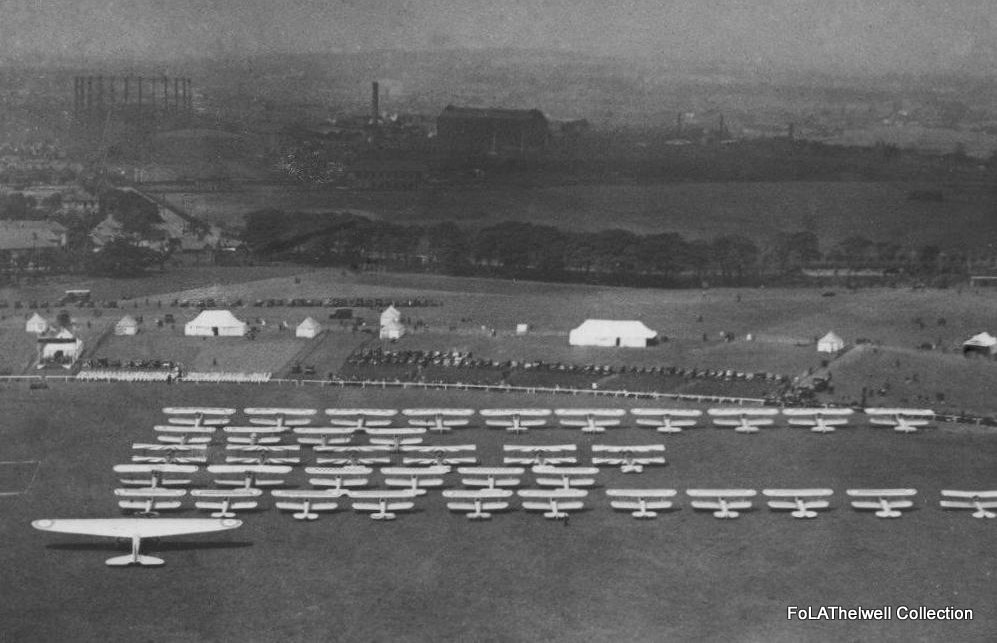
Front line 10 x Hawker Demon 23 Sqdn; 4 x Hawker Fury 1 Sqdn; 5 x Avro Tutor CFS; 2 Hawker Audax 4 Sqdn and 4 x Hawker Fury 43 Sqdn; 10 x Hawker Fury 25 Sqdn and a No.24 Communications Sqdn DH Moth; closest and largest, the Fairey Long Range Monoplane of 15 Sqdn.
The journalists for both ‘Flight’ and ‘Aeroplane’ had a great deal of praise for the R.A.F.’s contribution to the Air Display, and described each Squadron’s participation in some detail with much use of superlatives in their writing.
The ‘Squadron Air Drill’ was performed with 9 Hawker Demon aircraft of No.23 Sqdn flying in close formation, changing formation over the aerodrome – “a piece of showmanship” that the Flight journalist “found exceedingly interesting”.
His enthusiastic comments flow on into the Flight Aerobatics, involving a Flight of three Hawker furies from No.1 Sqdn. “They looped, rolled and made the tightest of turns, just as if they were only one machine. They even changed formation from line astern to flight ‘Vee’ half way up a loop. All their maneuvers were exact and perfect, but best of all - if we may dare to say that there was a best – was their final maneuver, the ‘Prince of Wales Feathers’. This was carried through in an original way. The three machines dived across the aerodrome and then climbed together in a steep zoom. At the appropriate height the leader looped, while the wing machines did aileron turns outwards and finally a sort of half roll with a 90 degree turn, to that they finished up with all three machines taking up formation in the same direction as that in which originally crossed the aerodrome.”
About the inverted flying of the 5 Avro Tutors from the CFS, he remarks about “the amazingly close formation flying... they even changed formation while on their backs.” The Aeroplane notes “ The inverted flying by instructors from the C.F.S. went down very well with the crowd. Certainly the way these Avro Tutors climb at about 500 feet a minute upside-down is amazing”.
The Air Combat between 3 Furies of 43 Sqdn and a single Audax of No.4 Sqdn “gave the crowd a clear idea of how modern high speed fighting aircraft would harass a larger machine, but in this case the performance of the larger machine was so nearly up to that of the fighters that we doubt whether she would have been shot down anything like so early as she was – certainly not if the rear gunner was up the usual efficient RAF standard.”
“The ‘Tied together Drill’ executed by three flights of No.25 Sqdn was, as we expected better than ever seen before. They kept their Furies tied together throughout the whole display, even to landing, turning on the aerodrome and taxiing back to the machine park. The final part of their flying was a wonderful exhibition of accurate flying, because they performed a perfect ‘Prince of Wales’ Feathers’ as a squadron, that is each flight took the place of a single machine in the normal manoeuvre – and still tied together, mark you!”
“To end the R.A.F. section of the display the Fairey Long Range Monoplane flew around for everyone to look at, after which it went back to Farnborough.”
Later, after some civil flying displays, the journalist notes “After departure the RAF machines made a farewell dive across the aerodrome en route to Sealand. The Secretary of State for Air then presented prizes and trophies to those that had won them.”
CIVILIAN PARTICIPATION IN THE FLYING DISPLAY
CLEARING CUSTOMSIn the programme this display was billed as a demonstration of the facilities now available at Liverpool Airport for a party of air travellers ostensibly bound for a Continental destination. A de Havilland Dragon, G-ACGU provided by Blackpool and West Coast Air Services is wheeled from the new hangar, the wings unfolded, and aircraft refuelled ready for flight. Meanwhile Customs Officer and Airport Manager attend to the passengers. The passengers embark and Capt H.J.Andrews takes off and flies across the River Mersey, which represents the English Channel and lands at Hooton representing a Continental destination, and return a few minutes later.
The journalist from Flight commented that “the first part of the programme was purely civilian flying and was somewhat tedious and left much to be desired. The waits between the items were too long, and some of the events themselves were, to say the least of it, waste of time”. Of the Clearing Customs event, the comment was, “We will hazard a guess that not one of the large crowd of general public there was at all interested in the spectacle of an alleged Customs official signing papers before a machine took off.”
SALUTE D’AIRBilled in the programme as a parade of many types of aircraft assembled at Liverpool Airport for the Merseyside Aviation Display. Aircraft will take off in a pre-arranged order, complete one circuit of the Airport and take part in a Fly Past of the Air Minister. Each aircraft will fly once down-wind with engine full out for an impression of grandeur and speed and then execute a further circuit before landing. The types of machine taking part will be announced to the public.
The Flight journalist goes on to relate “The ‘Fly Past’ was interesting because there were no less than 13 different types of aeroplane to be seen. They ranged from Hawker Hart to a Redwing, in matters of speed, a Saro Cloud to Comper Swift in size and from a Monospar to a Bristol Fighter in modernity. Bringing up the rear of the Fly Past was a very well kept formation of two Avians and a Moth from the Liverpool and District Aero Club, which has its headquarters at Hooton.” ‘The Aeroplane’ details the participants as Hawker Hart, a Comper Swift, a Monospar, a Stinson, a De Havilland Dragon, an Avro Cadet, a D.H. Fox Moth, a Saro Cloud, a Bristol Fighter, a standard Moth, a Redwing, an Autogiro and a Westland Widgeon. A formation of three machines of the Liverpool Aero Club from Hooton, wound up the procession and kept formation very well on a bumpy day.

Some of the participants in the ‘Salute d’Air’ lined up Redwing, 2 Avians, a Moth, Fox Moth, Bristol Fighter, Hawker Hart.
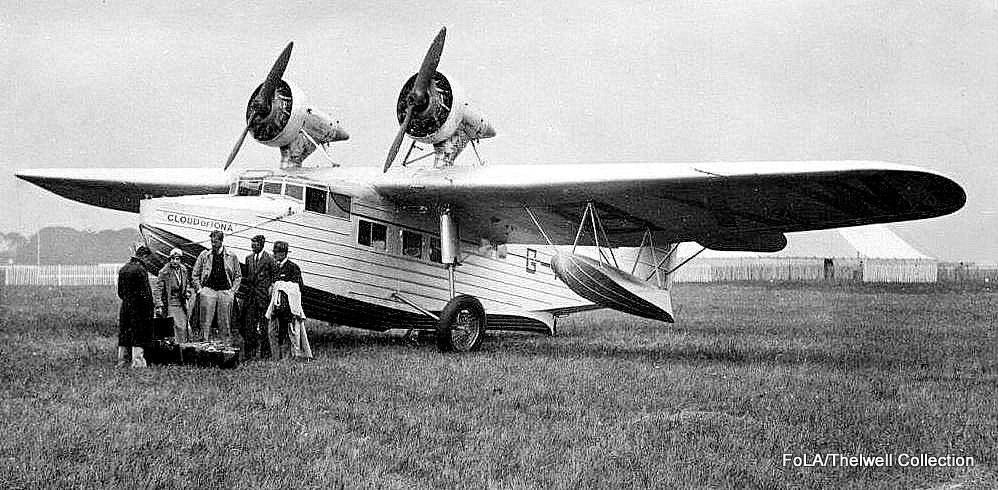
Another participant in the 'Salute d'Air' was the Saro Cloud amphibian.
FURTHER MAGAZINE COMMENT ON ITEMS IN THE CIVILIAN FLYING DISPLAY”Perhaps the most spectacular of this part of the programme was an exhibition of slow and inverted flying by Flt Lt G Stainforth in an Avro Cadet. His inverted spin was a manoeuvre not often seen at displays of this kind. Almost equally thrilling was a display by F/O P.E.G. Sayer, one of Hawker’s test pilots on their demonstration Hart. On some terrific climbs he must surely have had the throttle of his RR Kestral right through the gate, for he went up and up and up." The Flight journalist also briefly reported on the display by a Comper Swift. It would appear that although two machines were anticipated in the programme, only one displayed as “Mr. Tangye showed off the manoeuvrability of a Comper Swift and particularly impressive was his series of slow rolls right across the aerodrome.”
‘The Aeroplane’ journalist commented “Then Mr Brie demonstrated the Autogiro and Flt Lt Stainforth showed that an Avro Cadet could land nearly as slowly. After that there was a landing competition won by Mr Veale, with Mr Brie second and Mr Scott third. In a moment of aberration Flt Lt Stainforth dropped his Cadet several feet too far and did some damage to fuselage and undercarriage, but the staunchness of the machine was shown by the fact that he was able to taxi it to the shed.
WHEN PIGS FLY – CRAZY FLYING ROUTINEThis item was built-up in the programme as a fun item. The entry starts “Colonel Corduroy of the Doo Lalytop Lancers brings to England the first game of Aerial Pig Sticking – direct from the East. The Colonel spent 40 years in the Native State of Eyesore, India” ...... and so on, in a similar vein.
The Flight Journalist seems to have totally missed out on the Liverpool humour, and writes: ”The question of how dangerous any event should be allowed to be, in an endeavour to thrill the crowd, is very difficult to decide, and in the course of years we have seen many hair-raising events, but we doubt whether anything we have experienced was quite so shaking as a display which entailed looping a light aircraft off the ground and bursting a tethered balloon at the bottom of that loop. We take our hat off to the pilot – unnamed in the programme – who did this. His skill was undoubted, but we question the wisdom of the management in getting him to do it.”
CIVIL AVIATION 1933A section of the Air Display programme that neither magazine journalist commented on, was listed in detail in the flying display programme.
It could be that as there was much duplication in the aircraft involved that this flypast was merged into/confused with the 'Salute d'Air' listed earlier.| Type of Machine | Cruising Speed | Top Speed | Pilot |
| Percival Gull | 140 mph | 165 mph | Mr. E.W.Percival |
| Spartan Clipper | 100 mph | 110 mph | Col. L.A.Strange DSO,MC,DFC. |
| GAL Monospar | 125 mph | 145 mph | Flt.Lt. H.M.Schofield |
| Miles Hawk | 90 mph | 100 mph | Mr. G.L.Miles |
| B.A.C. Drone | 40 mph | 50 mph | Capt. Don Ayre |
| D.H. Dragon | 105 mph | 120 mph | Flt.Lt. C.Clarkson |
Plus other late additions.
PLEASURE FLYINGDuring the 1930’s there was a huge appetite by the public to taste the thrill of flight. The programme details 8 aircraft that would be providing flights for the public during the event. The list provided is full of detail, although clearly I have no record of whether the aircraft on the day were the same as given in the programme!
| Type | Regn | Comment | Seats | Fare | Speed | Owner | Pilot |
| DH Dragon | G-ACGU | - | 7 | 7/6 | 105 | Blackpool & West Coast Air Services | J.C.Higgins |
| DH.83 Fox Moth | G-ACFC | - | 3 | 5/= | 97 | Blackpool & West Coast Air Services | Miss Joy Muntz |
| DH.83 Fox Moth | G-ACFF | - | 3 | 5/= | 97 | Blackpool & West Coast Air Services | F. Yates |
| Avro Avian | G-EBXX | offering aerobatic flights | 1 | 10/= | 100 | Blackpool & West Coast Air Services | A.N.Other |
| Saro Cloud Amphibian | G-ABXW | "Cloud of Iona" | 11 | 10/= | 90 | British Flying Boats Ltd | Lord Malcolm Douglas-Hamilton |
| Cievra C.19 Autogiro | G-ABUG | - | 1 | 10/= | 80 | Cievra Autogiro Co Ltd | B.A.C. Brie |
| Fokker F.VIIA | G-EBTS | "Spider" | 12 | 10/= | 120 | Fokker Aircraft Co. | Capt. C.D.Dernard |
| DH Dragon | G-ACEU | - | 7 | 7/6 | 105 | Hillman Airways of Romford | H.Wood |
BANQUET AT THE TOWN HALL
In the evening the Lord Mayor Ald. Alfred Gates JP, presided at a dinner for the visiting pilots and guests. The ‘Flight’ journalist was clear invited along too and writes, “The Lord Mayor himself proposed a toast to the health of Lord Londonderry, and in so doing admitted that he had been antagonistic to the establishment of an airport, but that he was now converted. Lord Londonderry, in reply, said that he was convinced that it was along the road of reduction and limitation of armaments that the ultimate abolition of war between nations was to be found.”
Interesting statement, a sentiment of the time, but ultimately history shows to have been naive. “Speaking of the new airport, he hoped that a fleet of air liners would soon be added to the fleet of steamships which presently united Liverpool and Belfast. Finally, he looked forward to the day when a landing field would form part of the equipment of every town. Others who spoke were Ald. Sir Max Muspratt, Chairman of the Airport Committee and Ald. Sir Thomas White.

The Lord Mayor’s dinner at the Town Hall. The empty seats being due to many of the guests being late due to transport chaos leaving the Air Display.

Speakers at the end of the Lord Mayor’s Banquet. Left to Right: Lord Londonderry; Councillor Alfred Gates JP – Lord Mayor of Liverpool; Air Marshal Sir Robert Brooke-Popham – C in C Air Defences of Great Britain; Mrs Gates – Lady Mayoress.

The Lord Mayor’s Banquet Menu
CONCLUDING THOUGHT
Well, those of you have read through to the end, I hope this paints a picture in words and pictures regarding the very first Air Display at Speke. While the aircraft have changed and to extent written English expression, clearly much of the thrill and excitement of watching a well executed display routine still just as much delights someone standing on the beach at Southport 85 years later as it did the Flight and Aeroplane journalists in 1933.
MY THANKS TO:
David Smith for scanning his 1933 Airport Opening Air Display Programme and providing me with an electronic copy, the basis of this account. Fascinating document.
The ability to access on the internet the ‘Flight International’ back issues for July 1933 – an amazing historical resource.
Flypast Forum member ‘John Aeroclub’ for providing a copy of ‘The Aeroplane’ report – although very similar in content and tone to the ‘Flight’ report it provides a second opinion and further details.
For FoLA, who first printed a slightly shorter account in the Summer 2018 edition of ‘09/27’; as more than 3 months has passed, I now feel free to post it on nwan. FoLA is also the source of the ‘Alan Thelwell Collection’ photos used here, although the scans are of low resolution – there are many more but some are either repetition or of people. At the request of FoLA I've limited the number of images here to around half of the total (86). The collection is a magnificent record of a most notable day in the Airport's history as deserves an airing in its entirety due to its historical significance. The scans of the Banquet Menu come via FoLA from eagle-eyed member Kenneth Roberts who spotted the extremely rare item on eBay!



Spectators arriving at the 1933 Air Display.


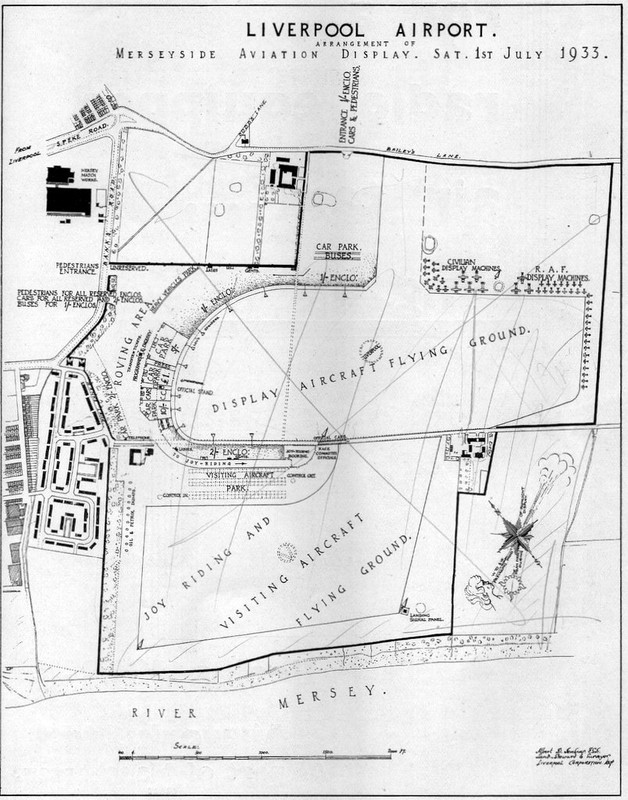


















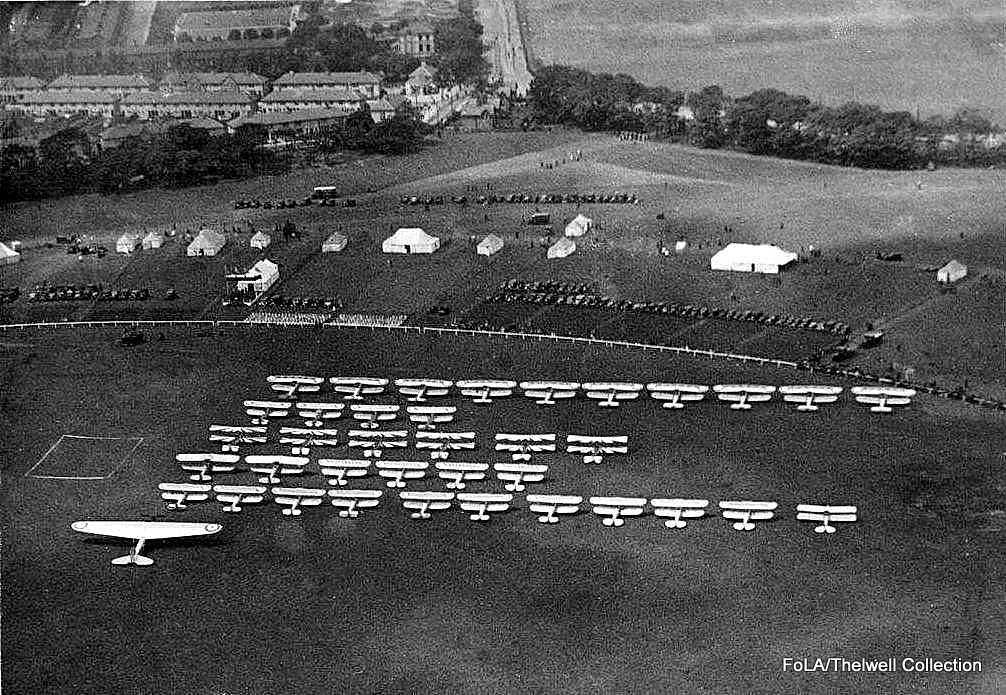
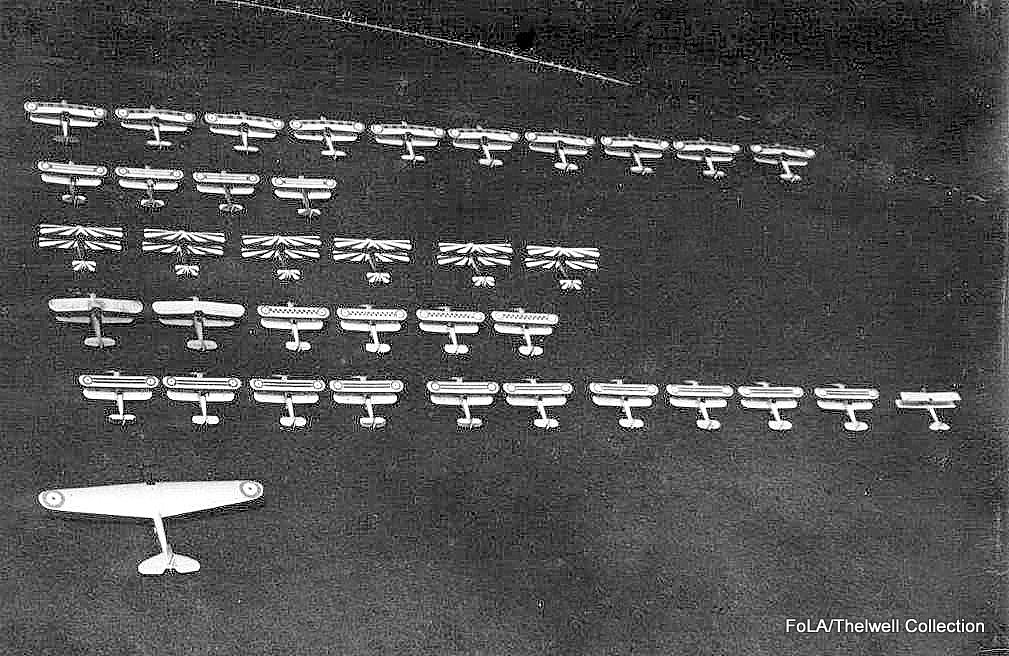
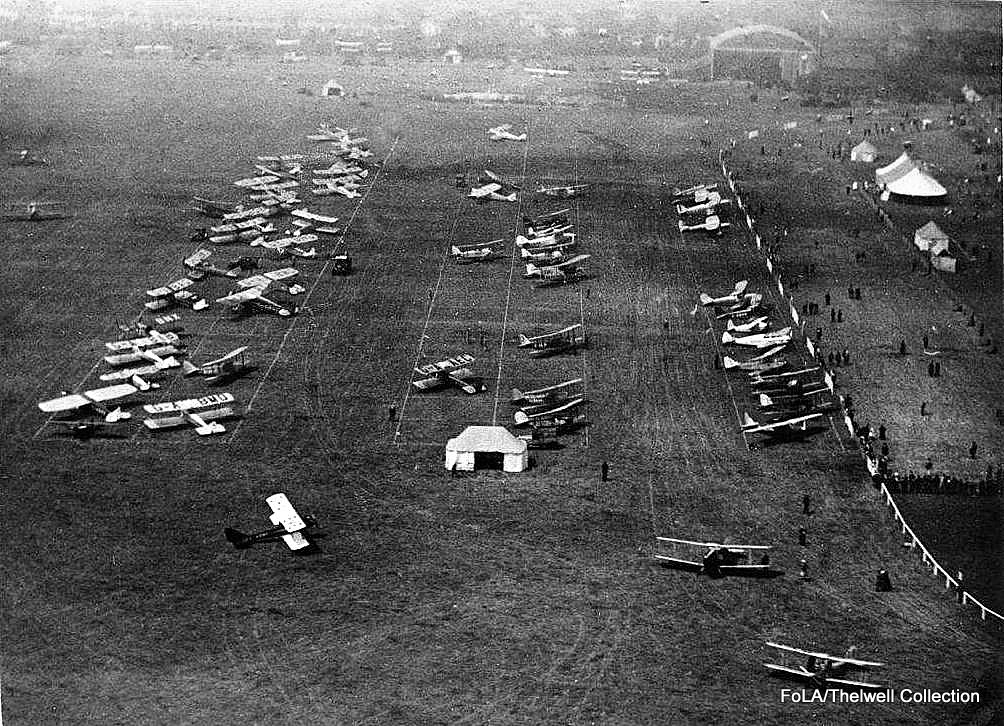
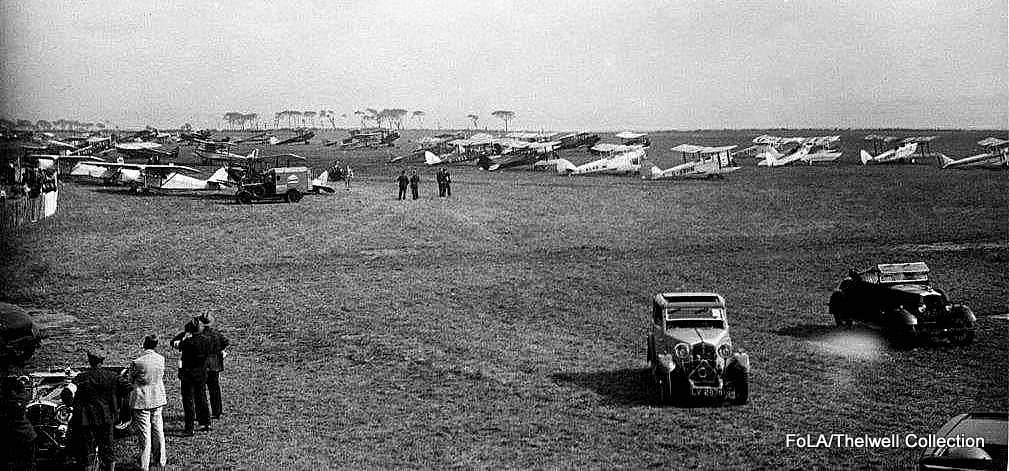








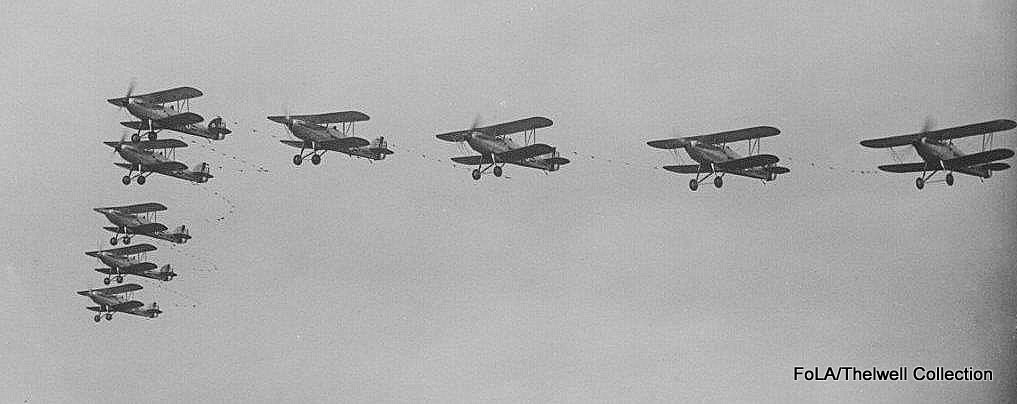




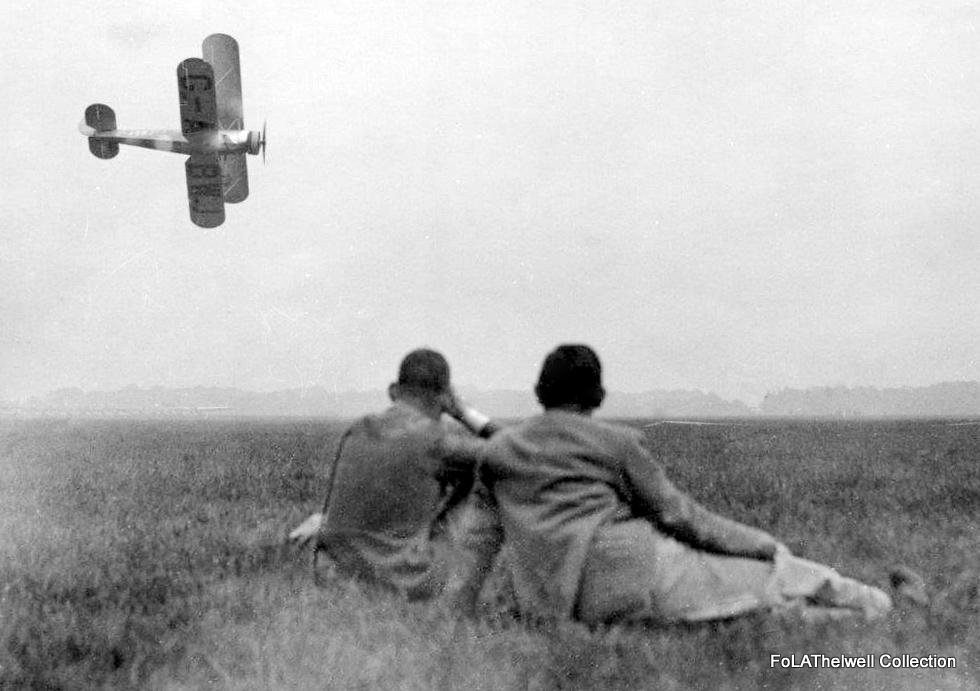

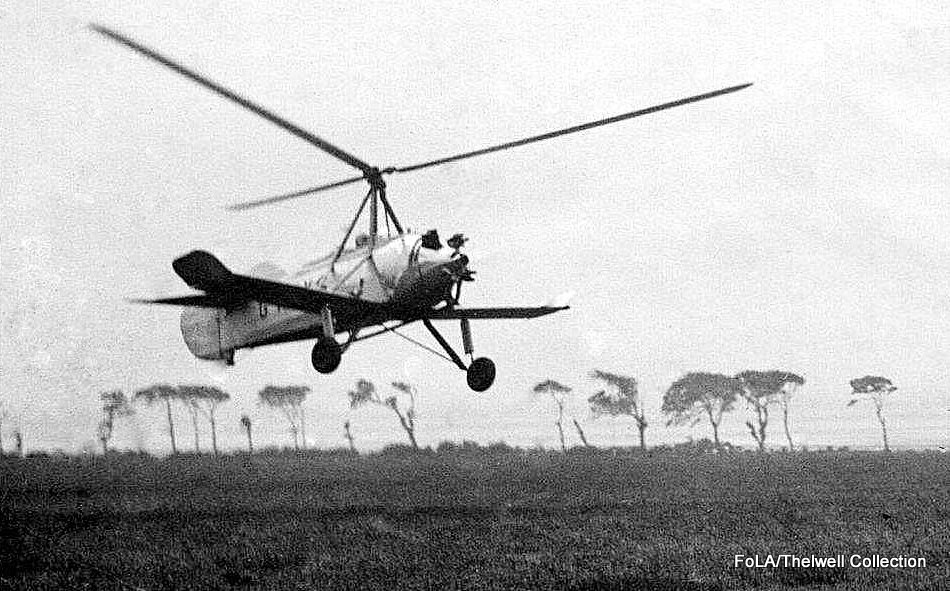
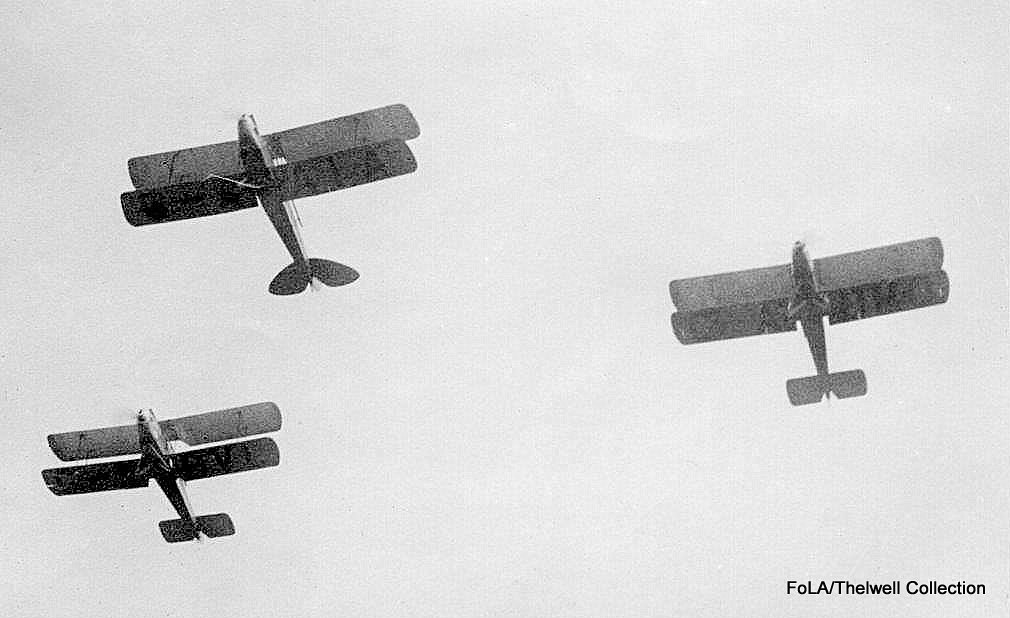




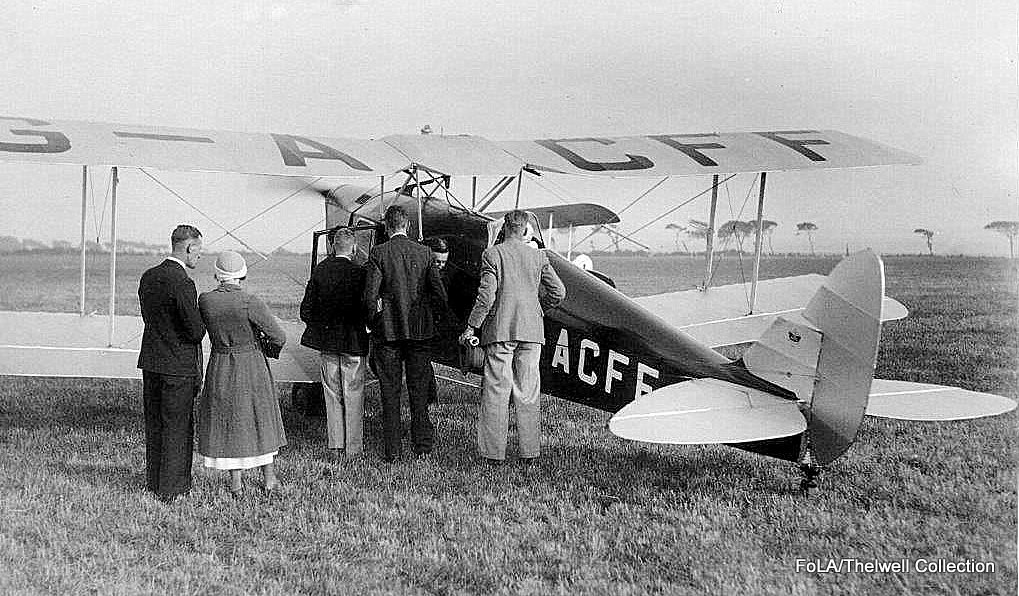











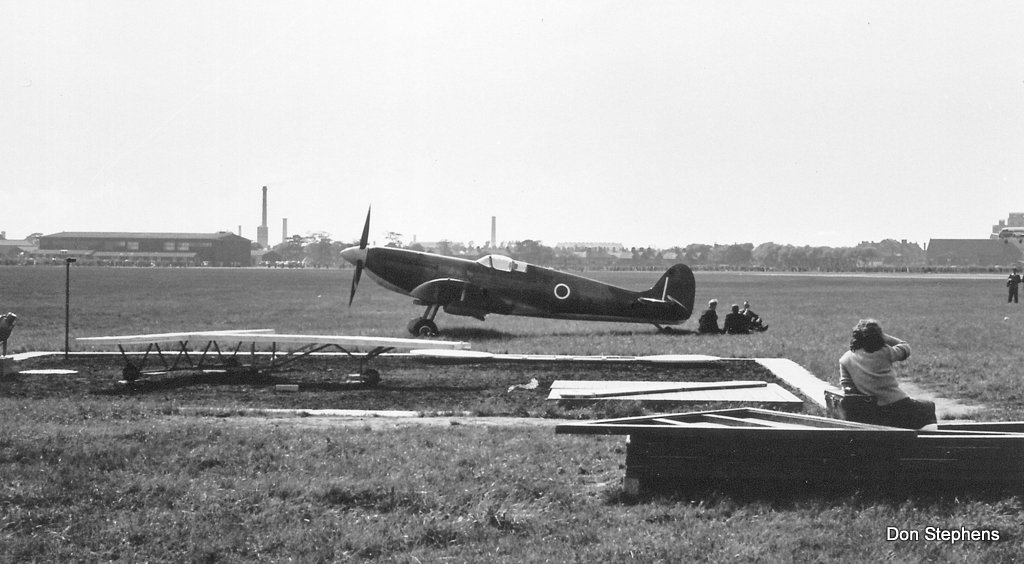


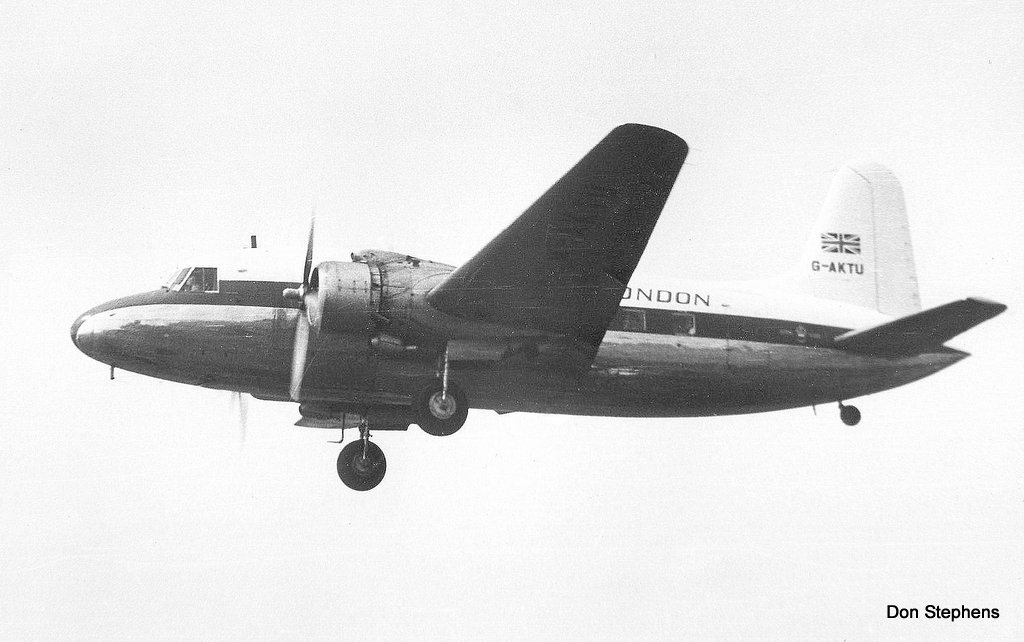



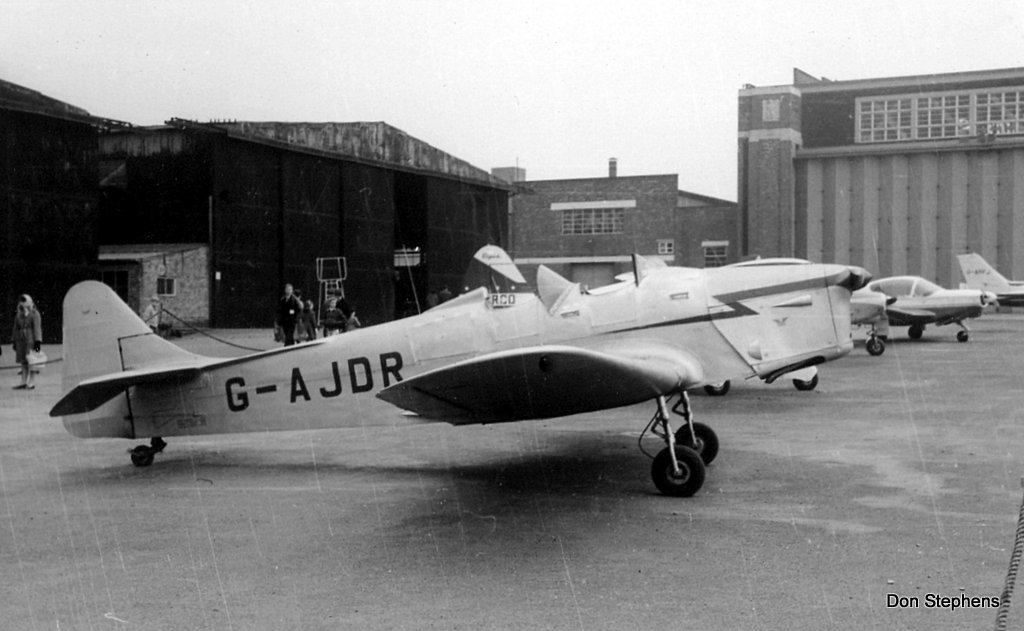


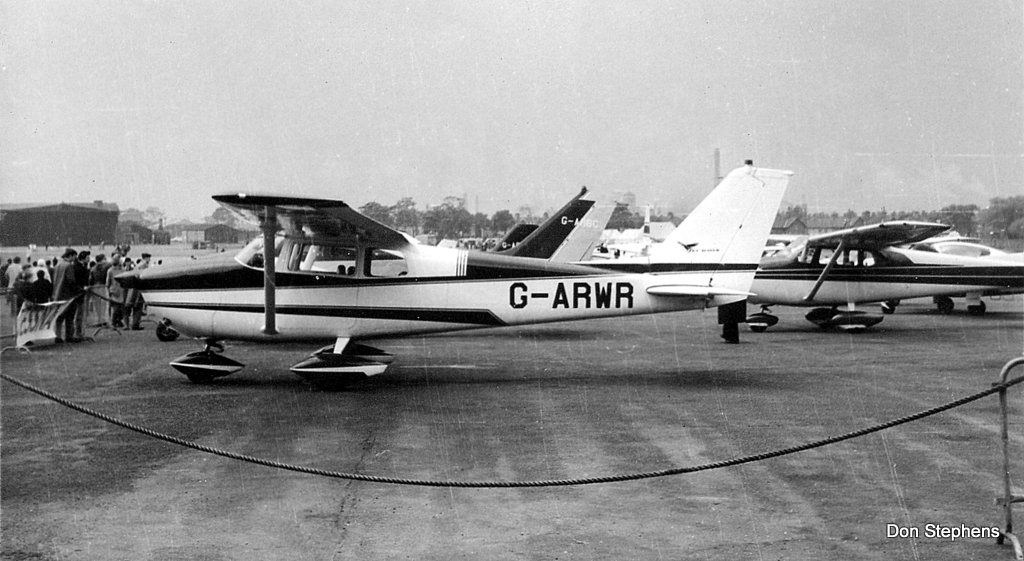

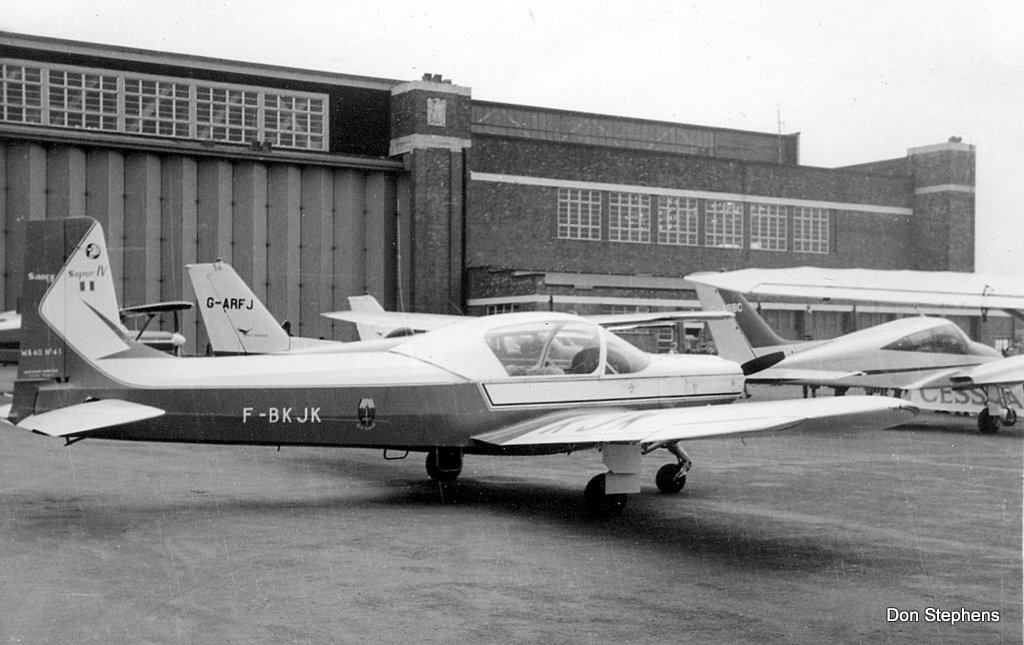




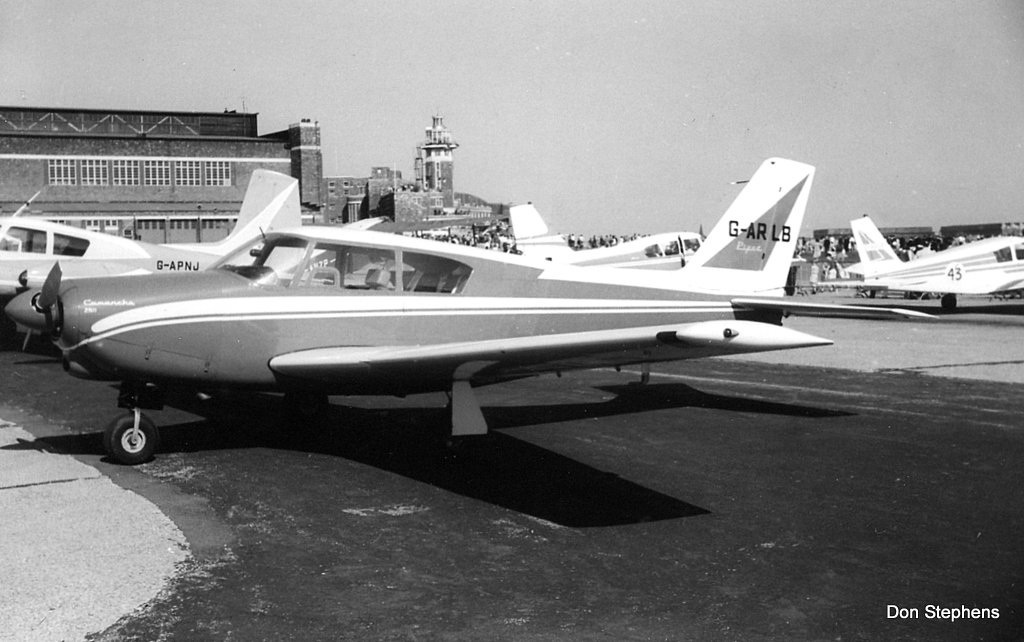




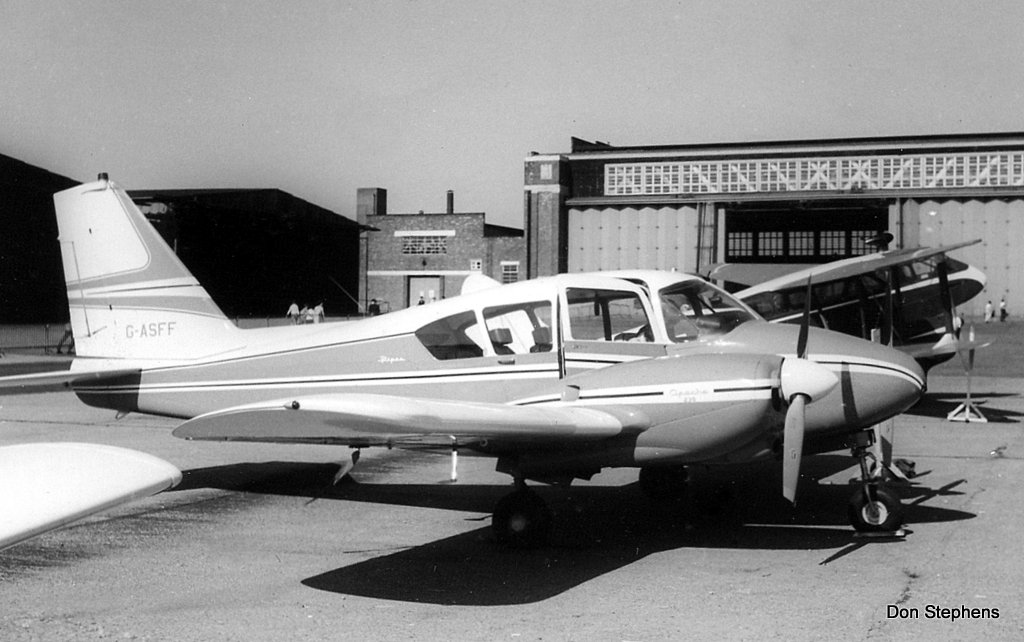
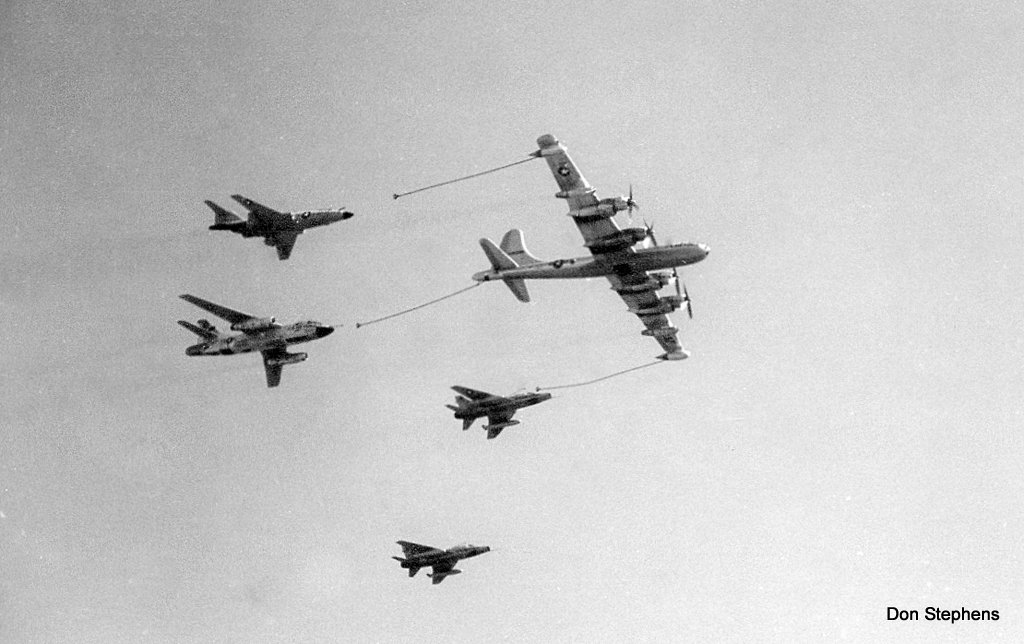

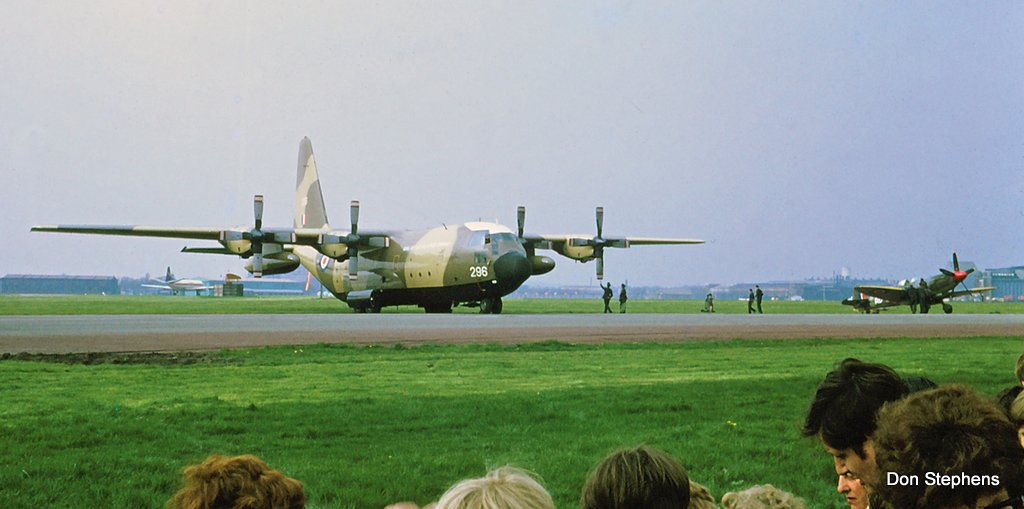
.jpg)
.jpg)



